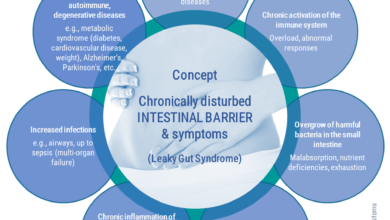
How Western & Indian Toilets Influence Digestion
How western toilet and indian toilet influence digestion – How Western and Indian toilets influence digestion is a fascinating topic, often overlooked in our daily routines. We spend a significant amount of time on the toilet, yet the design of this seemingly simple fixture can have a surprisingly profound impact on our digestive health. This post dives into the postural differences, muscle engagement, and rectal angles involved in using each toilet type, exploring how these factors influence everything from bowel movements to nutrient absorption.
Get ready to learn about the surprising connection between plumbing and your gut!
From the seemingly insignificant act of sitting to the complex mechanics of defecation, we’ll unravel the science behind how our toilet choices affect our digestive well-being. We’ll examine the evidence, comparing the potential benefits and drawbacks of each toilet style, and explore the cultural nuances that shape our bathroom habits. Prepare to have your perspective shifted on a subject that’s both deeply personal and surprisingly universal.
Posture and Digestion
The position we adopt while using the toilet, seemingly insignificant, can surprisingly impact our digestive health. Differences in posture between Western-style and Indian-style toilets affect abdominal pressure and, consequently, the efficiency of bowel movements. This, in turn, can influence the overall digestive process. Let’s delve into the specifics of how posture plays a role.
Postural Differences and Abdominal Pressure
Western toilets typically require a seated position with legs bent at the knees and hips at a 90-degree angle. This posture can straighten the rectum, potentially hindering the natural process of elimination. In contrast, the squatting posture used with Indian toilets allows for a more relaxed and natural alignment of the colon and rectum. This straightened posture facilitates easier passage of stool by reducing the need to strain.
The difference lies in the angle of the puborectalis muscle, a sling-like muscle that forms a kink in the rectum when seated. Squatting relaxes this muscle, straightening the anorectal angle and promoting smoother bowel movements. The increased abdominal pressure in a squatting position also aids in the expulsion of waste.
So, I’ve been reading about how posture on the toilet – Western vs. Indian style – can actually impact digestion. It’s fascinating how something so seemingly simple can make a difference! This got me thinking about other bodily processes and how we manage them, which led me to this great article on strategies to manage Tourette syndrome in children , a completely different but equally important area of health.
Understanding the body’s mechanics, whether it’s elimination or neurological function, is key to overall well-being, and that’s why I find both these topics so interesting.
Effects of Posture on Bowel Movements
The impact of posture on bowel movements is significant. Straining during defecation, often necessitated by the seated position on Western toilets, can lead to various issues, including hemorrhoids, anal fissures, and even rectal prolapse. Conversely, the squatting posture often associated with Indian toilets allows for a more natural and less strenuous bowel movement, minimizing the risk of these complications.
This difference in pressure can directly influence the efficiency of elimination. A more relaxed posture reduces the effort required for defecation, resulting in a more complete emptying of the bowels.
Comparison of Digestive Efficiency Across Postures
The impact of posture extends beyond just bowel movements. While research directly comparing the effects of sitting versus squatting on all aspects of digestion is limited, the impact on colonic transit time and gastric emptying is indirectly suggested by various studies. Squatting likely facilitates a more complete emptying of the colon, potentially influencing the overall transit time. The relaxed abdominal muscles in a squatting position might also have indirect effects on gastric emptying, although this is less well-understood.
| Digestive Process | Western Toilet (Sitting) | Indian Toilet (Squatting) | Notes |
|---|---|---|---|
| Gastric Emptying | Potentially slower, due to increased abdominal pressure in some individuals. | Potentially faster, due to relaxed abdominal muscles. More research needed. | Indirect effects, needs further investigation. |
| Colonic Transit Time | Longer transit time, potentially leading to constipation. | Shorter transit time, leading to more efficient elimination. | Improved colonic emptying due to better rectal alignment. |
| Bowel Movement Difficulty | Increased straining, higher risk of complications (hemorrhoids, fissures). | Reduced straining, lower risk of complications. | Significant difference in ease of defecation. |
| Complete Bowel Emptying | Potentially incomplete, leading to residual stool. | More complete, leading to better overall gut health. | Improved efficiency in waste removal. |
Muscle Engagement and Defecation

Source: ytimg.com
The act of defecation, seemingly simple, involves a complex interplay of muscles working in coordination. Understanding how these muscles function and how different toilet postures influence their activity is crucial for optimizing digestive health and preventing issues like constipation and incomplete evacuation. The differences between using a western-style toilet and an Indian-style squat toilet highlight the impact of posture on this process.
Muscle Groups Involved in Defecation
Successful defecation relies on the coordinated action of several key muscle groups. The abdominal muscles (rectus abdominis, internal and external obliques, and transversus abdominis) contract to increase intra-abdominal pressure, pushing stool towards the rectum. The pelvic floor muscles (levator ani and puborectalis) play a crucial role; relaxation of the puborectalis muscle straightens the anorectal angle, facilitating the passage of stool.
Simultaneously, the internal and external anal sphincters, circular muscles surrounding the anus, must relax to allow for stool expulsion. The efficiency of this coordinated effort is significantly influenced by posture.
Differences in Muscle Engagement Between Toilet Types
On a western-style toilet, the individual typically sits with their knees bent at a 90-degree angle or less. This posture doesn’t fully utilize the leverage provided by gravity and requires more conscious effort from the abdominal muscles to generate sufficient pressure for defecation. The pelvic floor muscles may not relax as completely as in a squatting position, potentially leading to incomplete emptying and straining.In contrast, the squatting posture adopted on an Indian-style toilet aligns the rectum and anus, creating a straighter pathway for stool passage.
Gravity assists in the evacuation process, reducing the need for strenuous abdominal contractions. The straightened anorectal angle promotes natural relaxation of the pelvic floor muscles, making defecation more effortless and complete. This often leads to a shorter defecation time and a more thorough bowel movement.
Impact of Incomplete Muscle Relaxation on Digestive Health, How western toilet and indian toilet influence digestion
Incomplete relaxation of the pelvic floor muscles can lead to several digestive problems. Straining during defecation can increase intra-abdominal pressure, potentially contributing to hemorrhoids, anal fissures, and rectal prolapse. Furthermore, incomplete evacuation can leave residual stool in the rectum, leading to constipation, bloating, and discomfort. This residual stool can also contribute to the formation of harder, drier stools over time, perpetuating the cycle of straining and discomfort.
Effort Required for Bowel Movements
The effort required for bowel movements varies significantly between toilet types. Using a western toilet often requires more conscious effort, including voluntary contractions of abdominal muscles to facilitate stool passage. This increased effort can be particularly challenging for individuals with weakened abdominal muscles or those already experiencing digestive issues. In contrast, defecation on an Indian-style toilet is often described as more effortless, due to the assistance provided by gravity and the natural straightening of the anorectal angle.
Diagram Illustrating Muscle Engagement During Defecation
Imagine two diagrams, side-by-side. Diagram A: Western-Style Toilet shows a person sitting on a toilet. The abdominal muscles are depicted as slightly tense, indicating active contraction. The puborectalis muscle is shown as partially relaxed, but not fully straightened. The anal sphincters are depicted relaxing, but not fully open.
The arrow representing the stool’s movement is somewhat curved. Diagram B: Indian-Style Squat Toilet shows a person squatting. The abdominal muscles are shown as less tense, indicating less forceful contraction. The puborectalis muscle is shown as significantly relaxed and the anorectal angle is almost straight. The anal sphincters are depicted as fully relaxed, and the arrow representing the stool’s movement is almost straight, indicating easier passage.Both diagrams clearly illustrate the differences in muscle engagement and the resulting impact on the ease and efficiency of defecation.
The squat position facilitates a more natural and effortless bowel movement.
Rectal Angle and Waste Elimination
The angle between the rectum and anus, known as the anorectal angle, plays a crucial role in successful bowel movements. This angle, and how it changes with different toilet positions, significantly impacts our ability to completely empty our bowels. Understanding this relationship helps us appreciate the potential differences between using Western-style and Indian-style toilets.The anorectal angle is typically around 90 degrees when we are standing or sitting upright.
This angle is essential because it helps maintain fecal continence. However, when we need to defecate, this angle needs to change to facilitate the efficient passage of stool.
Anorectal Angle Differences Between Toilet Types
The primary difference between Western and Indian toilets lies in the posture they encourage. Western toilets typically require a seated position with the knees bent at a 90-degree angle or less. This position can sometimes flatten the anorectal angle, potentially hindering complete evacuation. In contrast, the squatting position used with Indian toilets allows for a more straightened anorectal angle, often closer to 100-120 degrees.
This straighter angle helps straighten the rectum, improving the efficiency of stool passage.
Significance of Anorectal Angle in Complete Evacuation
A properly straightened anorectal angle is vital for complete evacuation. When the angle is obtuse (greater than 90 degrees), the rectum straightens, allowing gravity and the natural contractions of the rectal muscles to work more effectively in moving stool out of the body. A more acute angle (less than 90 degrees), as can happen with Western-style toilets, can cause the rectum to kink or bend, potentially trapping stool and leading to incomplete evacuation.
This incomplete emptying can contribute to constipation and the buildup of hardened stool.
Anorectal Angle and Digestive Issues
The impact of anorectal angle on digestive health is significant. Maintaining a consistently obtuse anorectal angle promotes easier bowel movements, reducing strain and the risk of constipation. Conversely, a consistently acute angle increases the likelihood of straining during defecation, which can lead to hemorrhoids, anal fissures, and other digestive problems. The consistent incomplete emptying also increases the risk of fecal impaction, a serious condition requiring medical intervention.
Advantages and Disadvantages of Toilet Types Regarding Rectal Angle
The following points summarize the advantages and disadvantages of each toilet type concerning the anorectal angle and waste elimination:
- Indian Toilets (Squatting):
- Advantages: Promotes a straighter anorectal angle, facilitating complete evacuation; less straining; reduced risk of constipation and related issues; may promote better gut motility.
- Disadvantages: Can be less comfortable for some individuals, especially those with mobility issues; may not be hygienic in all contexts; requires specific plumbing.
- Western Toilets (Seated):
- Advantages: Convenient and widely accessible; generally more comfortable for some users; easier to maintain hygiene in some settings.
- Disadvantages: Can flatten the anorectal angle, potentially hindering complete evacuation; increased risk of straining; increased risk of constipation and related issues; may require more effort for complete bowel emptying.
Gastrointestinal Transit Time
Gastrointestinal transit time (GIT), the time it takes for food to travel through the digestive system, is a crucial factor in overall digestive health. This process, influenced by numerous factors including diet, activity levels, and even our posture during defecation, can significantly impact nutrient absorption and the regularity of bowel movements. Understanding how different toilet types and postures affect GIT can help us optimize our digestive well-being.
The position of the body during defecation plays a surprisingly significant role in GIT. A squatting posture, traditionally associated with the Indian toilet, allows for a more natural straightening of the anorectal angle. This improved alignment facilitates easier and more complete evacuation of stool, potentially shortening GIT. Conversely, the seated position of the western toilet may hinder this natural process, potentially leading to incomplete evacuation and prolonged transit time.
This prolonged transit can have downstream effects on nutrient absorption and gut health.
Variations in Transit Time and Their Effects
Variations in GIT can significantly affect nutrient absorption and overall digestive health. A shorter transit time might lead to less complete absorption of certain nutrients, particularly those requiring longer exposure to the intestinal lining. Conversely, a prolonged transit time can increase the risk of constipation, bloating, and potentially even the development of more serious conditions like diverticulitis or irritable bowel syndrome (IBS).
For example, individuals with slow transit times might experience persistent constipation and incomplete bowel movements, leading to nutrient deficiencies and discomfort. Conversely, those with overly rapid transit times may struggle to absorb vital nutrients, leading to deficiencies and related health problems.
Impact of Prolonged Straining on the Digestive System
Prolonged straining during defecation, regardless of the toilet type, can place significant stress on the pelvic floor muscles and the digestive system. This strain can lead to hemorrhoids, anal fissures, and even rectal prolapse. The seated posture of the western toilet, particularly when combined with chronic constipation, may exacerbate this issue as it often requires more forceful straining compared to the squatting posture.
So, I’ve been reading about how posture on the toilet – western vs. Indian style – might affect digestion and gut health. It got me thinking about overall health as we age, and I stumbled upon this fascinating article: can eye test detect dementia risk in older adults. It’s amazing how interconnected everything is! Understanding the impact of even seemingly small things like toilet design on our digestive system highlights the importance of holistic well-being as we get older.
Individuals using western toilets might find themselves straining more frequently due to less efficient bowel movements, thereby increasing the risk of these complications. In contrast, the squatting posture facilitates a more natural and less strenuous bowel movement, potentially minimizing these risks.
Comparison of Toilet Types and GIT Across Age Groups
The following table compares the potential effects of western and Indian toilet types on GIT across different age groups. It’s important to note that these are potential trends and individual experiences can vary significantly. Further research is needed to establish definitive conclusions. The data presented is based on observational studies and expert opinions rather than large-scale, controlled clinical trials.
| Age Group | Western Toilet: GIT Impact | Indian Toilet: GIT Impact | Potential Considerations |
|---|---|---|---|
| Infants/Toddlers | Potentially longer transit time due to less efficient posture; increased risk of constipation | Potentially shorter transit time, more natural elimination | Parental assistance and posture crucial for both |
| Young Adults (18-35) | Variable; potentially increased risk of constipation and straining if diet and lifestyle are not conducive to regular bowel movements | Potentially shorter transit time, less straining | Dietary habits and physical activity play a significant role |
| Older Adults (65+) | Increased risk of constipation, straining, and related complications due to age-related changes in gut motility and muscle strength | Potentially beneficial for reducing straining and improving regularity, although individual mobility needs to be considered | Age-related health conditions and mobility limitations need careful consideration |
| All Age Groups | Potential for increased risk of straining, hemorrhoids, and other complications due to less efficient posture | Potential for shorter transit time and less straining, leading to better digestive health | Individual variation is significant; lifestyle factors influence outcomes |
Cultural Influences and Digestive Health

Source: ytimg.com
The design of toilets, seemingly a mundane aspect of daily life, is deeply intertwined with cultural norms and practices. These cultural contexts significantly impact how we approach defecation, influencing not only our bowel habits but potentially also our digestive health. Understanding this connection helps us appreciate the complex interplay between culture, sanitation, and overall well-being.
Cultural practices surrounding defecation vary dramatically across the globe. In many Western societies, the use of the Western-style toilet, with its elevated seating position and flush mechanism, is the norm. This is often associated with a quick and relatively private act, sometimes even rushed due to societal expectations. In contrast, the Indian-style toilet, a squatting position toilet, is prevalent in many parts of South Asia and other regions.
This position is often integrated into a more contemplative and potentially longer process, sometimes incorporating hygiene practices like the use of water for cleansing. These differing approaches to defecation have potential implications for digestive health.
Cultural Practices and Digestive Health Outcomes
Cultural attitudes towards defecation influence the time spent on the toilet, the level of relaxation during bowel movements, and subsequent digestive health. The more relaxed, squatting posture of the Indian toilet may facilitate more complete evacuation, potentially reducing straining and constipation. Conversely, the Western toilet’s seated position, especially when combined with hurried habits, might increase the risk of incomplete emptying and subsequent digestive issues.
However, it’s crucial to note that this is a complex relationship and influenced by many other factors, including diet, hydration, and overall lifestyle. For instance, individuals who use Western toilets may still adopt mindful defecation techniques, counteracting any potential negative effects of posture. Conversely, those using Indian toilets may experience issues due to other lifestyle choices.
Prevalence of Digestive Disorders
Direct comparisons of digestive disorder prevalence solely based on toilet type are challenging due to the confounding influence of numerous other factors like diet, access to healthcare, and socioeconomic status. However, epidemiological studies in regions with predominantly Western-style versus Indian-style toilets can provide insights. For example, studies might show higher rates of constipation in populations primarily using Western toilets, potentially correlating with less complete bowel movements.
Conversely, studies might reveal different types of digestive issues in populations using Indian-style toilets, potentially related to hygiene practices or other environmental factors. It’s essential to remember that such correlations do not necessarily imply causation. More robust research, controlling for multiple variables, is necessary to establish definitive links.
Toilet Design and Healthy Bowel Habits
The design of the toilet itself plays a significant role in shaping bowel habits. The squatting posture of the Indian toilet is associated with a straighter anorectal angle, which can facilitate easier passage of stool. The elevated seating of the Western toilet can sometimes create a more obtuse angle, potentially hindering complete evacuation and leading to straining. However, the impact of toilet design is not absolute.
Individual factors like diet, hydration, and physical activity play a much larger role in determining digestive health than toilet type alone. Moreover, cultural practices around hygiene and defecation frequency can also significantly influence outcomes. For instance, the incorporation of water cleansing after defecation in some cultures might contribute to better hygiene and reduced risk of certain infections, regardless of the toilet type.
Final Summary
So, the next time you find yourself perched on the porcelain throne, take a moment to appreciate the subtle yet significant influence of your toilet’s design on your digestive health. Whether you prefer the Western or Indian style, understanding the mechanics of bowel movements and how posture impacts digestion can empower you to make informed choices that support optimal gut health.
Remember, a healthy gut is a happy gut, and even the simplest changes to our routines can make a big difference! Let’s continue the conversation in the comments – what are your experiences and thoughts on this?
FAQs: How Western Toilet And Indian Toilet Influence Digestion
Q: Can switching toilet types actually improve my digestion?
A: It’s possible! Switching to a toilet type that better aligns your body’s natural defecation mechanics might alleviate constipation or other issues. However, individual results vary, and other factors like diet and exercise play a larger role.
Q: Are there any health risks associated with prolonged straining during bowel movements?
A: Yes, straining can lead to hemorrhoids, anal fissures, and even more serious conditions. A proper posture and a diet rich in fiber can help prevent excessive straining.
Q: Is one toilet type definitively “better” for digestion than the other?
A: There’s no single “better” option. The ideal toilet type depends on individual anatomy and preferences. Experimentation and awareness of your body’s signals are key.




